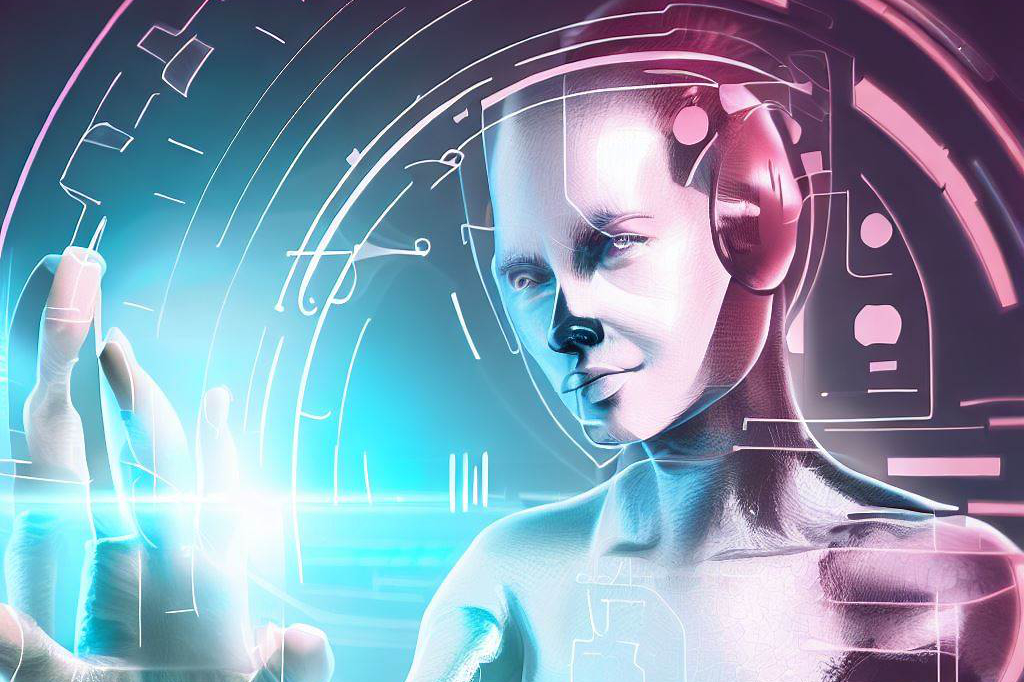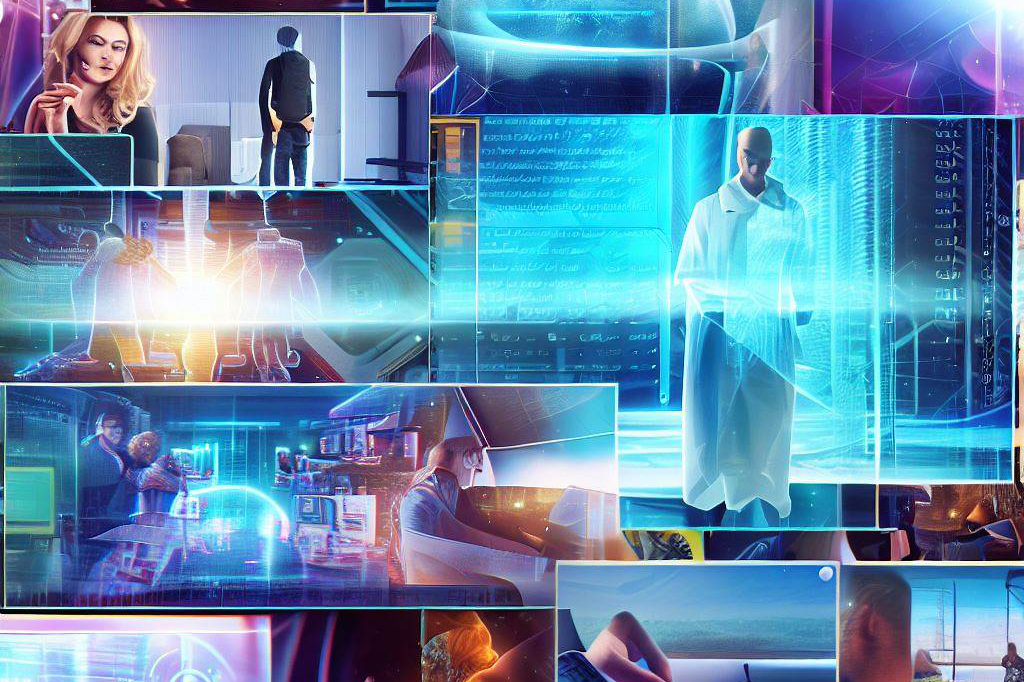A Brief History of Holography
Holography, the science of creating three-dimensional images using light, has a history that dates back to the late 1940s when Hungarian physicist Dennis Gabor first proposed the idea. However, it wasn’t until the invention of the laser in 1960 that holography became a practical possibility.
In 1962, Yuri Denisyuk created the first reflection hologram using a laser beam and photographic film. This was followed by advancements such as transmission and hybrid holograms, which enabled improved imaging quality and greater versatility in applications.
Today, holography has a wide range of uses in fields such as medicine, entertainment, education, and communication. From medical imaging to live concerts featuring deceased musicians via holographic projection, it’s clear that this technology is not just here to stay but is also set to revolutionize our future.
What is Holography?
Holography is an imaging technique that uses lasers to create three-dimensional images of objects or scenes. Unlike traditional photography or two-dimensional images on a screen, a hologram contains information about the light waves scattered from an object in all directions. This means that when viewed from different angles or under different lighting conditions, a hologram will display different aspects of the object it represents.
The word “hologram” comes from Greek roots meaning “whole picture.” This reflects how true-to-life these images can be when created using advanced techniques. In essence, a good hologram captures much more information than any other kind of two-dimensional image can convey.
That said, creating high-quality holograms still requires specialized equipment and expertise beyond what most consumers have access to today. But as technology continues to evolve at breakneck speed—bringing with it improved resolution, faster processing times, and greater accessibility—there’s no doubt that holography will soon become a regular part of our lives.
Holographic Technology

How Holograms are Created: A Peek Behind the Curtain
Have you ever wondered how those captivating 3D images that seem to come to life right in front of your eyes are made? Well, holography is a complex process that requires light, laser, and mirrors.
It starts with a beam of laser light that is split into two by a beam splitter.
One beam is directed straight onto the object you want to create the hologram of, while the other beam is reflected off a mirror and then recombined with the first one. The resulting interference pattern is captured on photographic film, which then forms a hologram.
Types of Holograms: Reflection, Transmission, and Hybrid
There are three main types of holograms-
- reflection,
- transmission
- and hybrid.
Reflection holograms are those we mostly see in museums or art galleries; they reflect light from all angles to display an image that appears to be floating in mid-air.
Transmission holograms involve viewing an image through a transparent film that has been recorded with interference patterns.
They can sometimes appear as if they’re floating in space but not as realistic as reflection ones.
Hybrid holograms combine elements from both reflection and transmission methods.
Advancements in Holographic Technology: The Future Beckons
If there’s anything we can predict about technology, it’s that it’s always evolving, and so too is the world of holography.
With ongoing advances in nanotechnology and material science over recent years, researchers have developed new ways to create more refined images in real-time without needing large-scale equipment or expensive materials like silver halide emulsions used for traditional films.
Moreover, advancements have been made in augmented reality (AR) and virtual reality (VR) where users can interact with digital content overlaid on their natural surroundings – something that was once just a sci-fi dream.
Imagine being able to see and touch hologram objects as if they were in front of you, explore a virtual museum exhibit or even take a virtual tour of another planet- that reality is not too far away! With the continued progress in holographic technology, innovation and creativity will be the only limitations on how we use them.
Applications of Holography

In the Medical Field: Holographic Surgeons and Diagnostic Tools
Holography has already started revolutionizing medicine with its potential for surgical training and planning. With holographic simulations, surgeons can plan surgeries more accurately, reducing the risk of complications.
Moreover, with these simulations, medical professionals can practice their skills in a safe environment before using them on real patients. This type of training is especially useful for complex surgeries where precision is critical.
But that’s not all holography can do for medicine. Scientists are also developing diagnostic tools that utilize holographic technology.
For example, researchers are testing a device that projects holograms of cells to aid in cancer diagnosis. These 3D images provide a clearer picture than traditional 2D imaging methods and could lead to earlier detection and better treatment options.
In the Entertainment Industry: Virtual Concerts and Movie Theaters
The entertainment industry is always looking for new ways to enhance the audience’s experience, and holography provides an exciting opportunity to do just that. Imagine being able to attend a concert by your favorite artist without leaving your living room!
With realistic 3D projections on stage, you would feel as if you were there in person. Holographic technology could also revolutionize how we watch movies.
Rather than simply watching characters on a screen, viewers could be fully immersed in the movie’s world with 3D projections surrounding them. It would be like being transported into the film itself!
In Education: Virtual Classrooms and Labs
Holography can bring education to life by offering immersive virtual classrooms and labs for students around the world. By creating lifelike models of historical sites or scientific processes as holograms, students could learn about these subjects in ways that were previously impossible.
Additionally, medical schools could use holography to create virtual cadavers for students to study and practice on. This would provide a more realistic and comprehensive learning experience than traditional textbooks or even real cadavers.
Holographic technology has the potential to transform many aspects of our lives, from entertainment to education and even medicine. As advancements continue, we can only imagine the endless possibilities that lie ahead for this exciting technology.
Holographic Communication

Virtual Meetings and Conferences: A New Era of Collaboration
Thanks to holographic technology, people from all over the world will soon be able to meet and collaborate in a virtual space that feels like a real-life meeting room or conference hall. Holographic communication can create a truly immersive experience, with participants feeling as if they are in the same room, even if they are thousands of miles apart. This could revolutionize how we do business, increasing productivity and efficiency by allowing teams to work together without the need for travel.
Beyond that, it could bring people closer together by facilitating more face-to-face interactions. In-person meetings foster stronger relationships between colleagues, which could be vital in a remote work environment.
Long-Distance Relationships and Communication: Bridging the Gap
Long-distance relationships have always been challenging due to physical distance and a lack of frequent face-to-face interactions. However, with holographic communication, couples in long-distance relationships can feel closer than ever before. Imagine being able to see your significant other as if they were standing right in front of you – every detail crystal clear – while still being hundreds or thousands of miles away.
This is now possible with holography technology. Holograms can allow couples separated by distance to spend quality time together in an immersive virtual space.
Impact on Social Interactions: Reimagining Human Connection
Holography has the potential to completely transform how we interact socially. Instead of communicating through screens or phones, we can engage with each other through life-sized holograms that mimic real-life interactions. For example, imagine attending a party where everyone is projected as a hologram into one central location; it would feel like everyone was really there!
Holograms could also facilitate cross-cultural communications by breaking down language barriers through visual aid. However, as with any new technology, there are potential downsides.
Holography could lead to further isolation if people begin to prioritize virtual interactions over real-life ones. It is essential to find a balance between the two and use holographic technology as a tool for improved communication rather than a replacement for human connection.
The Future of Holography

Integration with Artificial Intelligence and Virtual Reality
The integration of holography with artificial intelligence and virtual reality is a natural progression that will revolutionize the way we interact with the world. With this technology, we will be able to create incredibly lifelike simulations that will allow us to experience things in ways that are currently impossible.
For example, imagine being able to go on a virtual tour of ancient Rome or explore the depths of the ocean without ever leaving your home. The possibilities are endless.
One particularly exciting application is in the field of medicine. Surgeons could use holographic technology to practice complicated procedures before operating on real patients.
This would greatly reduce the risk associated with surgeries and potentially save lives. Another area where holographic technology will have a big impact is in education.
Students could use holographic simulations to explore complex concepts in science, engineering, and math. This would make learning more engaging and interactive, which could lead to better retention rates and more successful students.
Potential Impact on Job Market and Economy
As with any technological advancement, there is a potential impact on jobs and the economy. While it’s true that some jobs may become obsolete as a result of holographic technology, there are also many new opportunities that will be created.
For example, as holograms become more sophisticated, there will be a need for skilled technicians who can create and maintain them. There may also be new fields created around designing immersive experiences using this technology.
In terms of the economy, there will likely be an increase in demand for components used in creating holograms as well as increased investment in research and development related to this field. This could lead to economic growth and job creation.
Ethical Considerations
As with any new technology, there are ethical considerations that must be taken into account. One potential issue is privacy.
Holographic technology could potentially allow for the creation of incredibly realistic simulations of people, which could be used without their consent. Another concern is the potential for addiction.
With the ability to create immersive experiences that feel as real as the physical world, there is a risk that some people may become addicted to these experiences and withdraw from real life. There is a risk that holographic technology could further exacerbate existing inequalities.
For example, if this technology is expensive to create and maintain, it may only be accessible to the wealthy. This could widen the gap between rich and poor.
While holographic technology has incredible potential to transform our lives in positive ways, it’s important to consider the potential drawbacks and ethical concerns associated with this technology. By doing so, we can work towards creating a future where holography enhances our lives without causing harm or inequality.
Final Thoughts:

While there are certainly challenges associated with widespread use of holographic technology, including ethical considerations like privacy concerns over data collection or job market impacts from automation. It’s important not to overlook the immense potential benefits that this technology brings – from immersive experiences in entertainment and educational settings to new opportunities for remote communication without physical barriers.
As with all new technologies, we must approach the use of holography with caution and care. But as the benefits become more apparent, it is clear that this technology has the potential to fundamentally transform our lives and relationships in ways we never thought possible.

C M, a seasoned editor, journalist, and consultant, is deeply fascinated by the convergence of technology, space, and the future of humanity.
With a particular interest in transhumanism, futurology, and the philosophical and ethical dimensions of these domains, C M serves as the lead contributor to TranscendSphere and SpaceSpotlight.
When not penning insightful articles on these rapidly evolving fields, C M indulges in their love for podcasts and books, proudly embracing their status as a ‘Happy Nerd Extraordinaire!’





